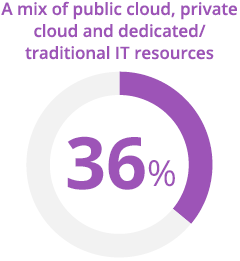Mobile and Cloud Boost Collaboration
Enterprises are evolving from static capital-intensive solutions to cloud-based and hybrid platforms that include a mix of cloud and premise-based solutions.
Cloud-based applications provide enterprises greater management flexibility as well as ability to rapidly deploy new capabilities. Today’s business environment requires agility and cost-effective collaboration solutions that can enhance employee productivity, while fostering efficient collaboration with partners and the supply chain.
The modern business workspace is being transformed by several cloud-based technologies with collaboration at the center of this phenomenon. Companies are embracing software tools and services based on new cloud-based delivery capabilities. These include UCaaS, virtual desktop infrastructure, SaaS, and mobile applications.
Over the last few years, cloud-based collaboration solutions have moved beyond the foundation of basic IP voice and cloud computing solutions.
The use of audio and web-based conferencing as well as UC platforms that encompass document sharing, messaging, and presence capabilities has grown steadily among corporate business users. In 2014, the majority (53%) of U.S. enterprises reported using a cloud-based UC platform or UCaaS solution. This has surpassed the implementation of premises-based solutions (36%).
2014



The key drivers for implementing cloud-based collaboration solutions are dramatic improvement in employee productivity as well as significant savings in capex and opex spending.
In 2014, 43% of U.S.-based enterprises listed employee productivity gains as the number one driver for implementing UC&C.
With the rapid growth of the mobile and remote workforce, cloud-based solutions provide enhanced flexibility for managing a geographically disparate workforce, while providing consistent and cost-effective tools for collaboration.
Cloud-based collaboration offers many benefits including the following:
- Flexibility to manage industry and company security and data access compliance policies by site and devices
- Real-time presence indicators
- Document sharing both inside and outside the company firewall
- Consolidated cloud compute and storage applications to optimize data management
Another key factor driving cloud collaboration is the growth of mobile networking in the enterprise workplace.
According to recent IDC research, there will be 1 billion mobile office workers worldwide by year-end 2015. Mobile enterprise device usage is outpacing overall market growth. The consumerization of IT and BYOD trends has had a significant impact on this segment. Mobility and cloud-based collaboration supports flexible work environments as well as the most dynamic collaboration tools such as the consolidated management of presence, messaging, and real-time collaboration. Mobile UC&C demand and implementation are growing due to perceived benefits of this enhanced flexibility and productivity.
Cloud collaboration is also being driven by the rapid implementation of IP networking including hosted IP voice and SIP-based voice networking. In addition, WebRTC is an important technology that is gaining traction and one that will help drive the penetration of cloud collaboration. In 2014, 34% of Enterprise employees used IP telephony including hosted voice and SIP-based communications. This growing IP networking base, along with a growing mobile workforce will continue to drive cloud-based UC&C services.
Collaboration’s impact goes beyond business flexibility and employee productivity. It also has a significant impact on business outcomes. IDC research shows that content collaboration is directly related to business performance metrics. In IDC’s 2015 Workforce Transformation Survey, 35% of companies reported a “significant impact” of content collaboration on customer satisfaction and effective business operations.

Despite the strong growth there are some obstacles to implementing cloud-based UC&C.
The up-front capital and operational costs as well as employee training are issues that enterprises have to surmount for a successful adoption. Another key issue is selecting the best communications service provider (CSP) to implement and manage the platform. Key attributes that enterprises need to consider in a potential CSP partner include:
- The ability to provide the most appropriate solution for the enterprise. The CSP must have a wide range of options as well as expertise on various vendor solutions.
- The ideal CSP will have expertise in consulting and professional services to help the enterprise design the most effective solution that fits their business requirements.
- The partner’s solution should be easy to implement and offer flexible contract options.